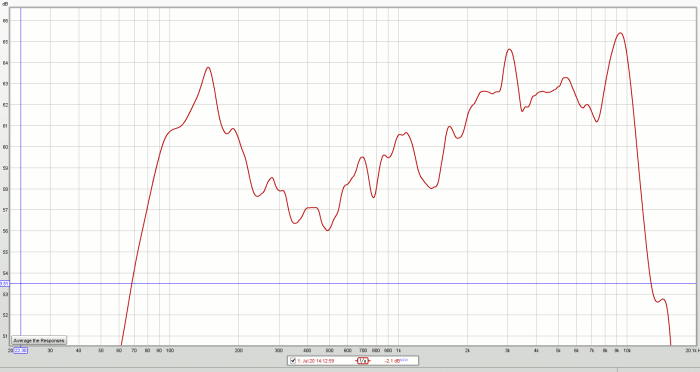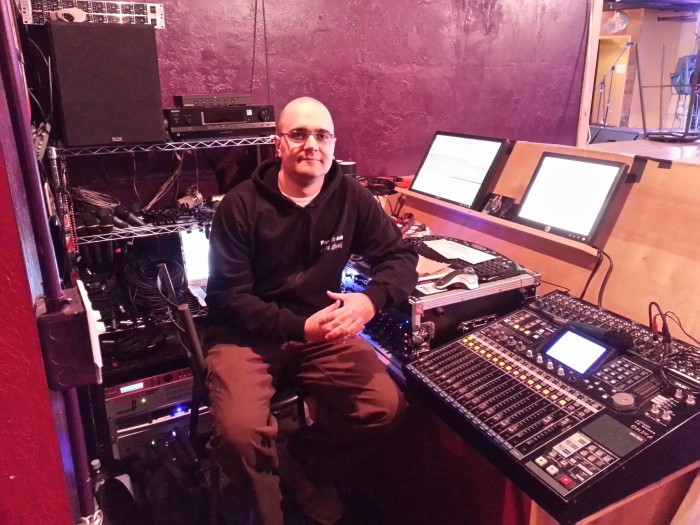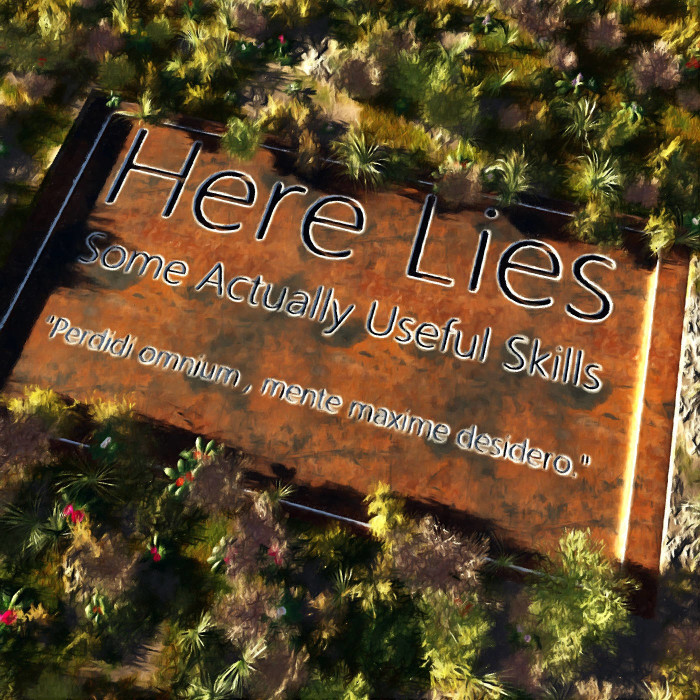If all your eggs are in one basket, and that basket seems to be going nowhere, it might be time to escape the basket.
Please Remember:
The opinions expressed are mine only. These opinions do not necessarily reflect anybody else’s opinions. I do not own, operate, manage, or represent any band, venue, or company that I talk about, unless explicitly noted.

 Want to use this image for something else? Great! Click it for the link to a high-res or resolution-independent version.
Want to use this image for something else? Great! Click it for the link to a high-res or resolution-independent version.I’m not exactly the biggest fan of the financial industry. The prevailing culture at the high levels of that business just rubs me the wrong way. However, this does not mean that applicable philosophies can’t come from them. To wit: Diversification.
Diversification of investment helps to shield you from market misfortunes. If you have all your money tied up in a traditional media company, and traditional media tanks, you’re going to be in real trouble. If you have some money in traditional media, some in tech, some in bonds (and so on), traditional media getting hammered won’t sink you outright.
It’s the same in terms of a music career. If absolutely everything is riding on a single, narrow specialization, you can face metric-tons worth of frustration and misfortune if that specialization isn’t “the in thing.” On the other hand, being able to fill multiple roles provides a bit of insurance. The more the roles differ from each other, the more insurance you have – and the currently fashionable skilset may just subsidize an unfashionable one.
Sometimes Problems Are You, And Sometimes They Aren’t
A barrier that some of us have to understanding this (I certainly have it, so I’m preaching to myself here), is the idea that things will always get better if we keep our heads down, do the work, and just wait things out.
You might want to ask how the horse-drawn carriage business is doing with that mentality.
Sure, there are still horse-drawn carriages, but they’re nothing more than a curiosity when compared to mechanized transport. It’s not a problem with cyclical fashions. It’s not a problem with horse-drawn carriage builders not having a great work ethic. It’s a problem with very few people needing or wanting a horse-drawn carriage anymore.
If our eggs are in some sort of metaphorical basket, a real bit of smarts is being able to determine when that basket just isn’t going to travel anymore. If the basket’s going nowhere, and it’s not in our power to make the basket go somewhere, we need to seek a different basket.
For example, I don’t think the “major, flagship, music-only recording facility” basket possesses any real momentum anymore. This is not to say that large studios for music production won’t continue to exist. They will, but they will continue to become more and more a luxury curiosity. With much of their capability having been computerized and miniaturized, the big studio with the large-frame console is far less necessary than before. This is why I personally don’t want to invest much in a large-studio-centric career. It’s not a good bet on average. The industry’s need for flagship music studios has dropped dramatically, and no amount of hustle, advertising, or longer work hours will change that.
This kind of thing also happens with bands and musicians. There are players out there who are locked into niche specializations:
“We never do covers.”
“No solo projects allowed.”
“If we can’t be as loud as we want, we won’t play.”
These are just archetypes, of course, but you get the idea. I think you might also be able to see the potential problems.
If people in the area don’t want to go to black metal shows, it doesn’t matter how much you practice or how much marketing you do.
If there’s a great gig that would make your band real money, but requires covers, you’re outta luck.
If band members can’t pursue their own projects, and the band just isn’t “sparking,” they’re being denied other opportunities to have real careers in the business.
If the band is only really appropriate for enormous venues and giant festivals, you’re missing out on all kinds of other places to play – and this is a big deal if you’re not yet super-famous.
In contrast, the folks who are able to do lots of different things, at lots of different times, and in lots of different places are much less limited. I’m not suggesting that everybody has to be good at everything, but I am suggesting that it’s good to find a variety of things that your natural talents connect to. Even though the actual disciplines can be surprisingly different (like live-audio and recording), a lot of the basic concepts and terminology can transfer. Diversification isn’t trivial, but I don’t think it always has to be a monumental struggle, either.
We’re all limited, but imposing additional, artificial limits on ourselves can make us overly reliant on the world being in tune with exactly how we are. If we can diversify, we probably should.
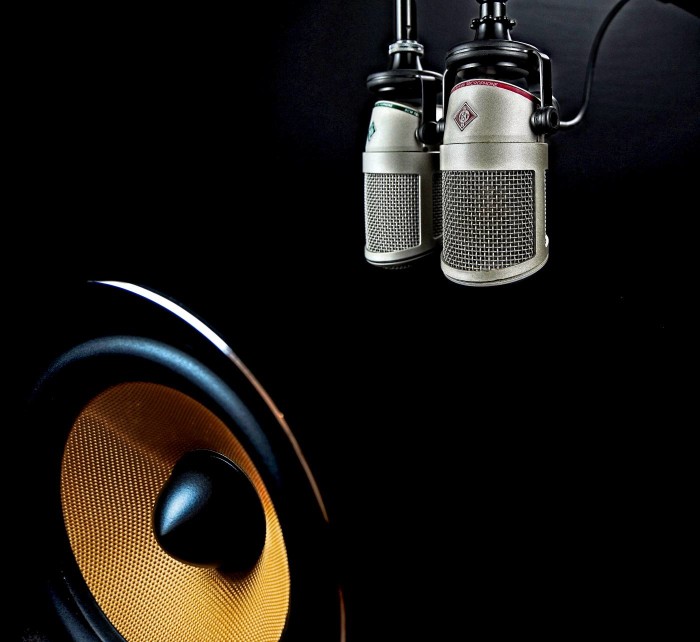
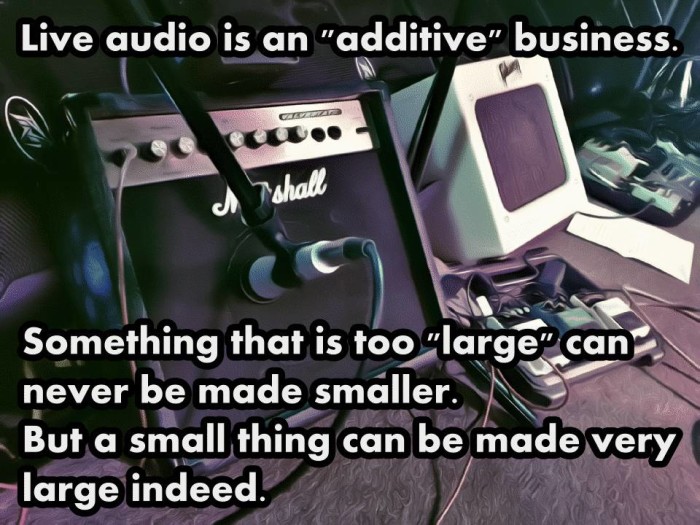
![[micinfographic]](http://smallvenuesurvivalist.com/wp-content/uploads/2015/07/micinfographic-700x417.jpg)
![[myface]](http://smallvenuesurvivalist.com/wp-content/uploads/2015/07/myface.jpg)

